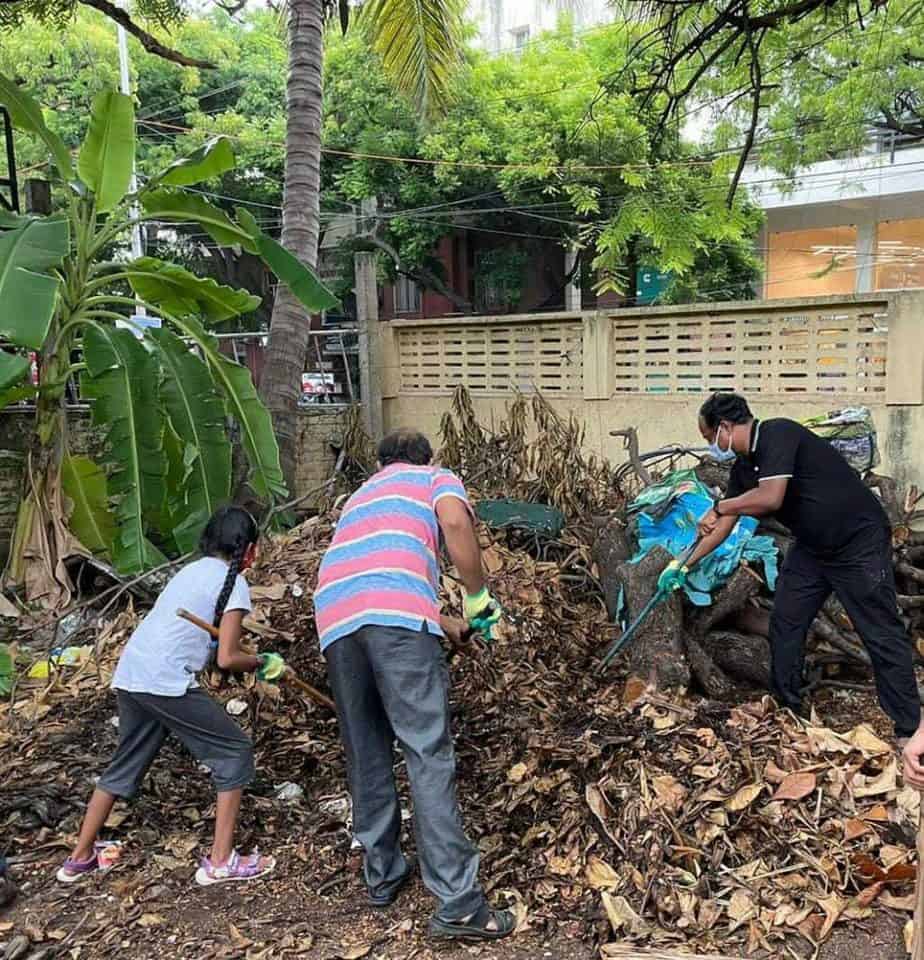Chennai’s Semmozhi Poonga, which experiences fluctuating fortunes based on who is in power at Fort St. George hosted a a short three-day flower show from June 3. To prepare the park for the event, funds have flowed in for beautification, including the laying of granite walkways.
In recent days, a new park in Gandhi Nagar, Adyar, has been named Kalaignar M. Karunanidhi Park, after the former Chief Minister.
The question that showpiece parks, some of which levy entry and photography charges, pose is this: can green commons in a populous and sprawling city be created only at high expenditure?
Read more: In pictures: A stroll through parks in North Chennai
Gaps in plan for parks in Chennai
It is an issue of significance, considering that densely populated cities in India such as Chennai play host to a large population that is deprived of Urban Green Spaces (UGS), particularly the residents aged over 60 who seek walkability and safely accessible, free commons.
The Greater Chennai Corporation (GCC) started peak summer in May with a programme to repair ten parks. It is also pursuing a programme to create ten sponge parks, which can retain some of the copious rain that comes down on some days every year, even in a drought year.
Where Chennai’s parks plan falters, however, is in its inability to provide fully accessible facilities in all its zones, and the poor road conditions that prevent the intended population of senior citizens, women and children from using them.
The hypothesis that Chennai (and Delhi) lack suitable parks and walking infrastructure to cater to a growing number of older adults seeking UGS was tested by researchers Dipti Adlakha and her colleagues, and they reported their findings in the International Journal of Environmental Research and Public Health in 2021.
Unsurprisingly, the qualitative responses from participants show that the built environment in Chennai actually deters senior citizens from using green commons in their neighbourhood, although these UGS spaces offer a reprieve from air and noise pollution and are visually appealing.
Dr. Adlakha and colleagues write: “The quality of UGS is dependent on its integration with neighbourhood planning, design of streetscapes, and pedestrian infrastructure.”
They point out that the World Health Organization (WHO) and the UN have identified accessible UGS as important to ‘healthy ageing’, a term denoting good physical and mental health among seniors and social health in general through greater community interactions made possible by green spaces and walkability.
‘Ageing in place’ is another social trend factored into urban planning and architecture today since a significant percentage of older citizens live in their own houses rather than move to newer, suburban communities designed for seniors.
Both these approaches require urban planning agencies such as the Chennai Metropolitan Development Authority (CMDA) and GCC, as well as suburban Tambaram, Avadi Municipal Corporations and the dozen Municipalities and Town Panchayats in greater Chennai to incorporate UGS into their plans.
Walkability to these green sites along with safe public transport is also included in the measurement of their usability.
Planning for vehicles over community parks in Chennai
It is revealing that one of the study respondents from Chennai quoted in the journal article had this to say about the city: “The footpaths are no longer places where people can walk. They have become parking bays for cars. Without the park, I don’t know where I would walk safely and go for exercise. It is impossible to walk on the streets these days. They are filled with motorcycles, cars, and autorickshaws leaving no space for us.” (Female, Age 66, Chennai).
While official parks programmes are seen as expensive and needlessly upscaled projects, community-level initiatives can replace them building far many more green spaces than would otherwise be possible.
Towards this, the paper argues: “Our study demonstrated the transformation of community liabilities into assets. In both cities (Delhi and Chennai), community gardens were established through informal interaction with neighbours and social networks. Studies of the social dynamics of community gardens have illustrated the relationships between urban greening and community building. Grassroots initiatives such as community gardens can transform dilapidated vacant lots into usable UGS. Once created, these UGSs can continue to strengthen social ties and build a sense of community.”

Read more: Playgrounds and parks make way for Metro rail in Chennai
Need for community level urban commons in Chennai
Neither should it be difficult to create a circular path to greening, producing compost from the green waste that is generated by households and hotels.
An RTI application response to this writer from GCC indicates that only a small fraction of the city’s green waste is being turned into compost at 5,443 tonnes for the whole of 2022 when the minimum compostable waste generation is around 1,600 tonnes a day.
This compost could well green numerous urban green commons identified by the civic bodies and maintained by the respective local communities.
Results from this study, the authors contend, underscore the fact that everyone can benefit from UGS, but they can be of particular relevance for older adults living in socially disadvantaged or underserved communities, which often have the least access to high-quality parks and green space. Such communities should have a large number of safe parks to access, without user or entry fees and charges.
What the research findings seem to indicate is for civic policy to go beyond just a few showpiece parks, to large-scale green commons that could range from small stands of greenery to extensive walkable gardens.
While Semmozhi Poonga, the Adyar biodiversity park, and other newer parks are welcome, the local walkable environment and the neighbourhood green patch hold the key to community welfare.
(This story was first published in Inmathi.com and has been republished with permission. The original article can be found here.)